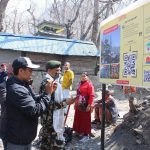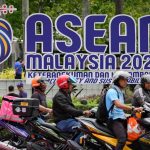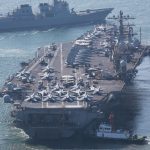Trump’s Asia Tour: A Strategic Move in the Indo-Pacific
U.S. President Donald Trump has embarked on his first trip to Asia during his second term, marking a significant shift in U.S. foreign policy and diplomatic engagement. The tour includes visits to Malaysia, Japan, and South Korea, as the region continues to navigate the complexities of Trump’s transactional approach to international relations. This journey is not just about strengthening alliances but also about reinforcing the U.S. presence in the Indo-Pacific, where geopolitical dynamics are constantly evolving.
A Focus on ASEAN and Regional Stability
The trip begins with a stop in Malaysia, where Trump will attend meetings with leaders of the Association of Southeast Asian Nations (ASEAN). This marks an important step for the U.S., as it is not common for a sitting president to engage with ASEAN at such a high level annually. During his first term, Trump only attended one ASEAN summit in 2017 when the Philippines hosted the event. However, this visit to Malaysia signals a renewed interest in engaging with Southeast Asian nations, even those not traditionally on the U.S. priority list.
One of the key events during the Malaysian leg of the trip is the signing of a peace deal between Cambodia and Thailand. Trump’s participation in this event is expected to highlight his role as a mediator in regional conflicts. The two countries had been engaged in a deadly border clash earlier this year, and Trump’s involvement could further solidify his image as a peacemaker. His previous public statements urging both sides to resolve their differences were accompanied by threats of imposing tariffs if no progress was made, showcasing his transactional style of diplomacy.
Strengthening Ties with Japan
Following Malaysia, Trump will head to Japan, where his itinerary closely mirrors his 2019 state visit. This time, however, he will meet with Sanae Takaichi, Japan’s first female prime minister. Takaichi, a hard-line conservative, is known for her strong alignment with the late Prime Minister Shinzo Abe, who had a close personal relationship with Trump. During his three-day stay, Trump is expected to express admiration for Abe, emphasizing the long-standing alliance between the U.S. and Japan.
Trump is also likely to discuss the recent trade agreement reached between the two nations, reiterating his call for increased Japanese investment in the U.S. and greater purchases of American goods. This reflects his broader strategy of using tariffs as a tool to pressure other countries into more favorable trade terms. Japan, like many other nations, has faced significant tariff threats from Trump, who often accuses them of “ripping off” the U.S.
South Korea and the Broader Economic Context
Trump’s final stop in Asia is South Korea, where he will hold discussions with local leaders amid ongoing trade tensions. South Korea is hosting the annual Asia-Pacific Economic Cooperation (APEC) forum, which aims to promote economic integration among Pacific Rim nations. However, Trump will skip the APEC summit, focusing instead on bilateral talks with Chinese President Xi Jinping.
This meeting is expected to be the highlight of the trip, as it comes against the backdrop of rising trade tensions between the U.S. and China. Recent developments include China’s new export restrictions on rare earth minerals, which are crucial for high-tech industries. In response, Trump has threatened to impose a 100% tariff on goods imported from China starting November 1.
Conclusion: A Diplomatic Strategy in Motion
Trump’s Asia tour is more than just a series of diplomatic engagements; it is a strategic effort to reinforce U.S. influence in the Indo-Pacific and assert its position in global trade. From mediating regional conflicts to strengthening alliances with key partners, the trip underscores the administration’s focus on transactional diplomacy. As the world watches closely, the outcomes of these interactions could shape the future of U.S. foreign policy in the region.










